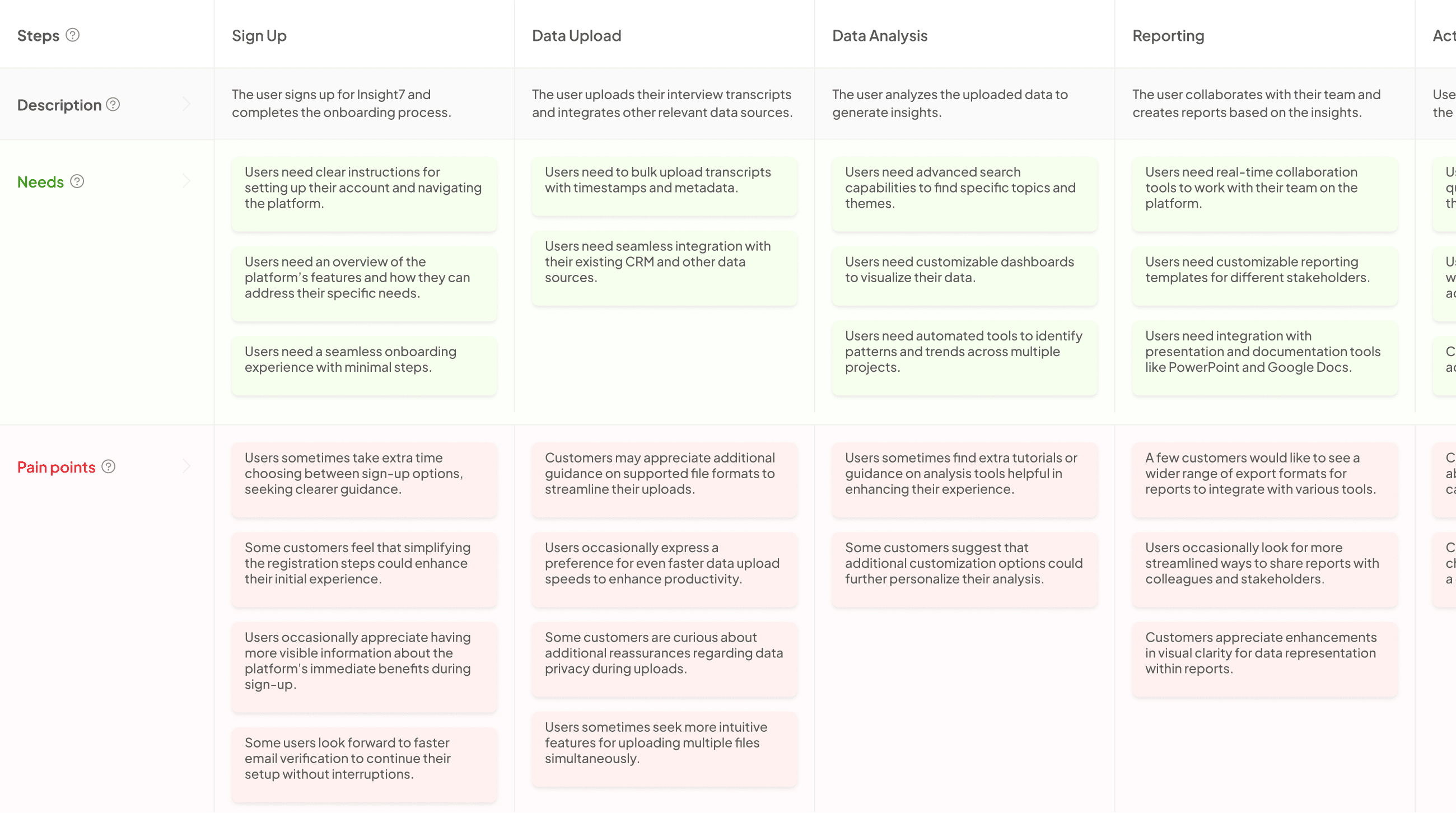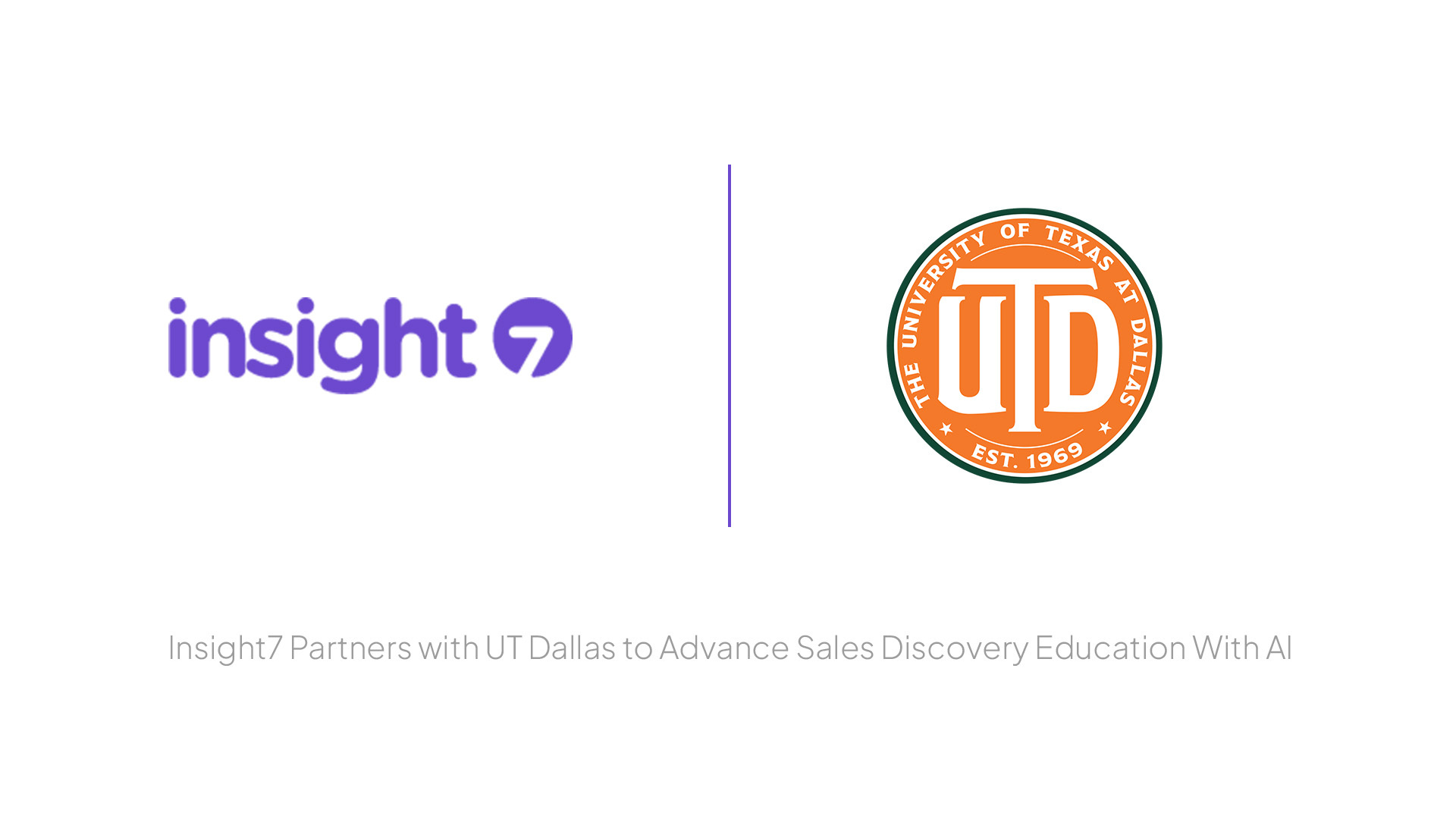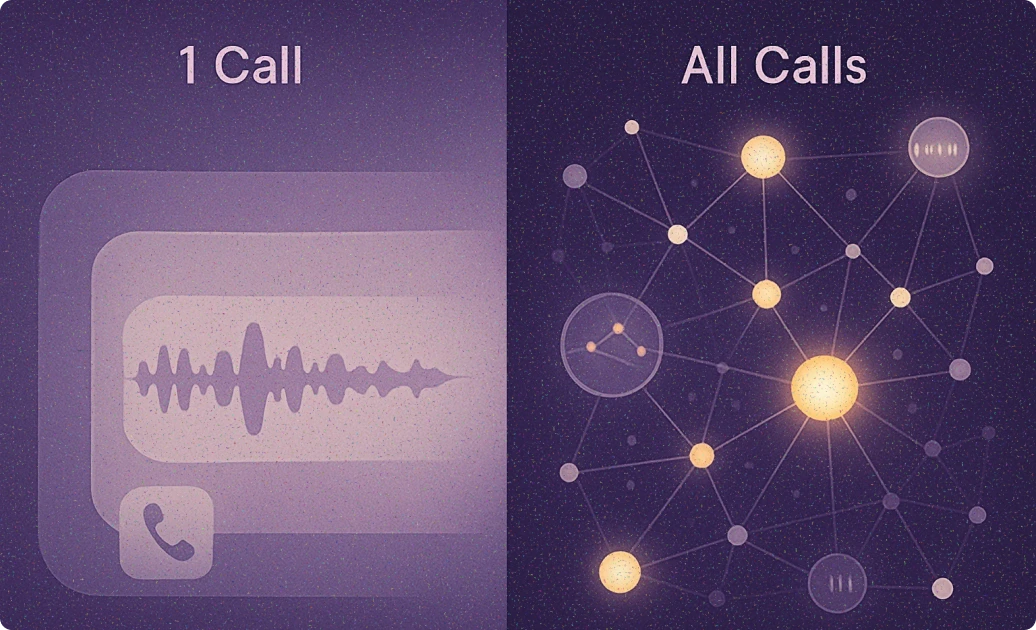How to visualize journey maps from buyer calls
-
Bella Williams
- 10 min read
In the realm of marketing, understanding how buyers interact through conversations is paramount. Buyer Journey Visualization from calls enables organizations to map out the intricate paths potential customers take, illuminating their experiences and pain points. This visualization process transforms raw call data into actionable insights, guiding businesses in refining their strategies and addressing customer needs effectively.
By creatively representing these journeys, companies can better anticipate buyer behaviors. Capturing the nuances of each conversation allows teams to identify friction points and improve overall satisfaction. As we delve deeper into the methodology of visualizing these journeys, we’ll explore essential steps and techniques that can elevate your approach to understanding customer interactions effectively.
Extract insights from Customer & Employee Interviews. At Scale.

Mapping the Buyer Journey: Visual Techniques
To effectively convey the Buyer Journey Visualization, various visual techniques can be employed to map the journey in a meaningful way. This process begins by transforming customer call data into visual representations. By charting the path from initial research to the final purchase decision, organizations can unveil critical friction points and customer needs. It's essential to identify each stage and to visualize the emotions and experiences of buyers at every touchpoint.
Creating these visual maps not only enhances understanding but also facilitates actionable insights. For instance, consider using flowcharts to depict the sequential steps of the buyer's journey.
Additionally, infographics can summarize insights and highlight critical pain points, making them easier to communicate across teams. The ultimate goal is to leverage visual techniques to gain clarity and foster improvements that enhance the overall customer experience. This mapping process plays a pivotal role in informing strategies and optimizing buyer interactions.
Gathering Data: Buyer Journey Visualization
Gathering data for buyer journey visualization involves a methodical approach to extracting meaningful insights from buyer calls. The first step is to listen closely to the recorded conversations, identifying key themes, positive feedback, and areas for improvement. This helps create a foundational understanding of the buyer’s experience, allowing you to visualize their journey more effectively.
After identifying the insights, organizing and structuring the data is critical. Group similar feedback to identify patterns and trends within the response sets. This structured data can be visualized through charts or diagrams that illustrate critical touchpoints in the buyer journey. Effective visualization not only clarifies the customer experience but also highlights opportunities for enhancement, making it easier for teams to strategize around customer needs moving forward.
Step 1: Extracting Insights from Buyer Calls
Successful Buyer Journey Visualization begins with extracting insights from buyer calls. When you engage in buyer conversations, it's crucial to capture details that reflect their experiences and preferences. Start by transcribing these calls, as the clarity of text allows for easier analysis. Once you have transcripts, you can quickly identify key themes, pain points, and motivators that buyers express during their discussions.
Next, utilize analytics tools to extract actionable insights from the data you gathered. This process involves highlighting specific sections of the transcripts that resonate with significant insights. For example, if a buyer mentions frustrations with a common issue, capturing this verbatim adds credibility to your analysis. Organizing these insights will pave the way for meaningful visualizations, ensuring your journey maps effectively portray the true buyer experience, guiding your strategies for improvement and growth.
Step 2: Organizing and Analyzing Call Data
Organizing and analyzing call data is crucial for revealing actionable insights. Begin by transcribing the recorded calls to create a clear text reference. This allows you to format and structure the information effectively for analysis. Once transcriptions are ready, categorize conversations by themes or key topics, such as customer pain points or recurring questions. This systematic approach helps streamline the analysis process and enhances clarity during discussions on buyer journey visualization.
Next, evaluate the transcribed data by identifying patterns and trends. Using specific analytical tools can assist in extracting valuable insights. Focus on determining the emotional tone conveyed by customers and their main concerns. Highlight key moments from the calls to visualize the buyer journey effectively. By organizing the data thoughtfully, it becomes much easier to construct a detailed journey map that accurately reflects customer experiences and informs your future strategies.
Generate Journey maps, Mind maps, Bar charts and more from your data in Minutes
Buyer Journey Visualization Tools and Techniques
Generate Journey maps, Mind maps, Bar charts and more from your data in Minutes
Generate Journey maps, Mind maps, Bar charts and more from your data in Minutes
Insight7: Leading the Way in Visualization
Insight7 presents a pivotal exploration in visualization, particularly within the realm of Buyer Journey Visualization. By effectively translating complex customer interactions into visual representations, businesses can gain invaluable insights into their buyer's experience. The key lies in recognizing that each customer call can unveil distinct pain points, desires, and decision-making processes. These elements, when visually organized, enable teams to clearly identify trends and actionable strategies.
To lead the way in visualization, focus on three core methodologies: first, collate data from conversations to extract meaningful insights; second, structure this data into coherent visual formats; and finally, utilize these visuals to foster collaboration across teams. This streamlined approach not only enhances understanding but also accelerates decision-making. In doing so, businesses can transform their gathered insights into tactical initiatives that resonate with their audience, thereby enhancing customer experiences and driving success in the market.
Additional Tools for Journey Mapping
Utilizing additional tools for journey mapping can significantly enhance your buyer journey visualization efforts. Tools like Lucidchart enable you to create clear, visually engaging maps that detail each stage of the customer experience. By visually representing various touchpoints, you can easily identify where customers encounter friction and how to refine those experiences.
Collaborative platforms like Miro foster teamwork, allowing your entire team to contribute insights in real time. Meanwhile, Smaply provides comprehensive journey mapping capabilities to help visualize complex interactions. Another useful tool, Custellence, streamlines the process of understanding customer experiences. With these tools, you not only create powerful visualizations that capture buyer insights but also foster a culture of continuous improvement within your organization. By integrating these resources, you enhance your understanding of the buyer journey and can take informed actions to improve customer satisfaction.
Lucidchart: Designing Clear Visual Maps
Buyer Journey Visualization requires clear and effective mapping of insights derived from buyer calls. In this context, designing visual maps plays a vital role in conveying complex information in a digestible format. Utilizing tools like Lucidchart, you can efficiently translate raw data from calls into organized visuals, which enhances understanding and facilitates decision-making.
Lucidchart enables you to create diagrams that pinpoint critical stages in the buyer's journey, showcasing emotions, pain points, and motivations. By applying different shapes, colors, and connectors, your visual representations can highlight relationships and flows in the buyer experience. This not only aids in identifying trends and gaps but also helps stakeholders easily grasp the overall journey. In summary, effective visual mapping through such tools ensures that the insights from buyer calls are communicated clearly, enabling better strategies and improved customer engagement.
Miro: Collaborative Visual Thinking
Miro serves as an invaluable tool in the realm of collaborative visual thinking, especially when applied to buyer journey visualization. This platform fosters a shared workspace where teams can brainstorm and represent complex buyer journey insights visually. Such collaborative environments enhance comprehension and alignment among team members, which is crucial for effective decision-making.
Utilizing Miro, teams can create journey maps that visually depict customer interactions and experiences. By integrating elements such as sticky notes, diagrams, and flowcharts, stakeholders can collaboratively dissect feedback from buyer calls. This approach not only organizes information systematically but also highlights key pain points and positive experiences. As a result, teams gain a clearer understanding of customer behavior, enabling them to make informed adjustments to strategies and product offerings. Overall, Miro transforms abstract data into concrete visual narratives that guide businesses in understanding their buyer’s journey.
Smaply: Comprehensive Journey Mapping
Comprehensive journey mapping provides an insightful way to visualize the buyer journey, making it easier to understand customer experiences and pain points. With the right tools, organizations can transform raw data from buyer calls into structured visualizations that highlight critical touchpoints. This process enables teams to identify friction areas and develop strategies for improvement.
Using effective journey mapping techniques, user insights can be gleaned from buyer calls and meticulously illustrated. These visual representations not only clarify customer needs but also streamline decision-making processes for teams. Through this comprehensive mapping, businesses can create actionable recommendations that enhance customer experiences across every stage of their journey. Adopting these strategies ultimately leads to improved satisfaction levels and fosters customer loyalty, which is essential in today’s competitive landscape.
Custellence: Streamlining Customer Experience
Effective customer experiences hinge on understanding and refining the buyer journey. Custellence streamlines this process by allowing businesses to visualize customer interactions seamlessly. By translating complex data from buyer calls into clear visual representations, organizations can easily identify key touchpoints and pain points that buyers encounter. This visual mapping facilitates a more engaging dialogue within teams, driving collaborative efforts to improve customer journeys.
Buyer journey visualization not only simplifies data comprehension but also enhances the decision-making process. Businesses can prioritize actions based on real insights gathered from customer interactions. With a streamlined approach, organizations are better equipped to anticipate buyer needs and deliver tailored solutions. As a result, this method contributes to stronger customer relationships and ultimately drives growth. Emphasizing a more intuitive understanding of customers empowers teams to adapt swiftly and efficiently, transforming customer feedback into actionable strategies.
Conclusion: Bringing Buyer Journey Visualization to Life
In conclusion, bringing Buyer Journey Visualization to life requires a thoughtful approach that transforms raw data into actionable insights. By creating a visual representation of buyer calls, organizations can uncover critical pain points and streamline the customer experience. This visualization not only highlights users' needs but also identifies opportunities for improvement throughout the buying process.
Ultimately, effective Buyer Journey Visualization enriches both the understanding of customer behavior and the strategies that follow. When businesses can see the journey clearly, they can craft more targeted solutions, enhancing customer satisfaction and driving growth. A clear visualization of buyer journeys serves as a roadmap to success in an increasingly competitive landscape.







